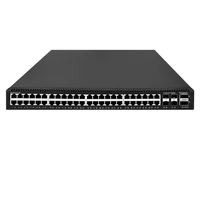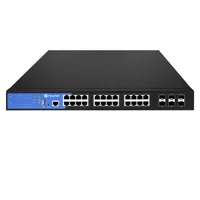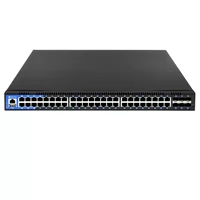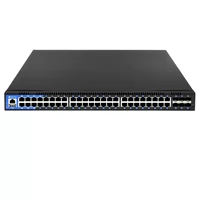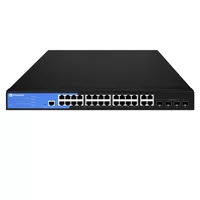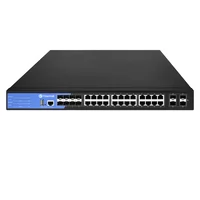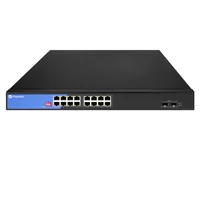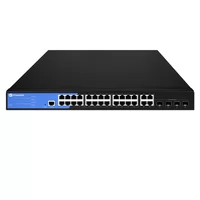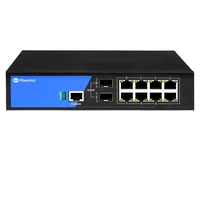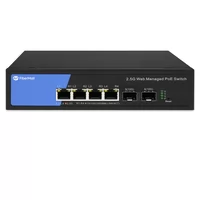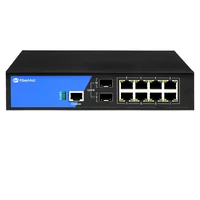In the contemporary era characterized by rapid technological advancements, the infrastructure of an organization’s network is the foundation of any successful business. Efficient enterprise network switches are crucial for optimal productivity, full organizational communication, and meeting the needs of modern business functions. What are these switches and how can they transform the performance of your network? This guide aims to simplify the intricacies surrounding enterprise network switches and provide valuable insights regarding their functionalities, primary attributes, and importance in the IT optimization ecosystem. This will enable IT practitioners and other strategic decision-makers to leverage network switches and adapt their systems to meet evolving business needs.
Table of Contents
ToggleWhat is an Enterprise Network Switch and How It Works
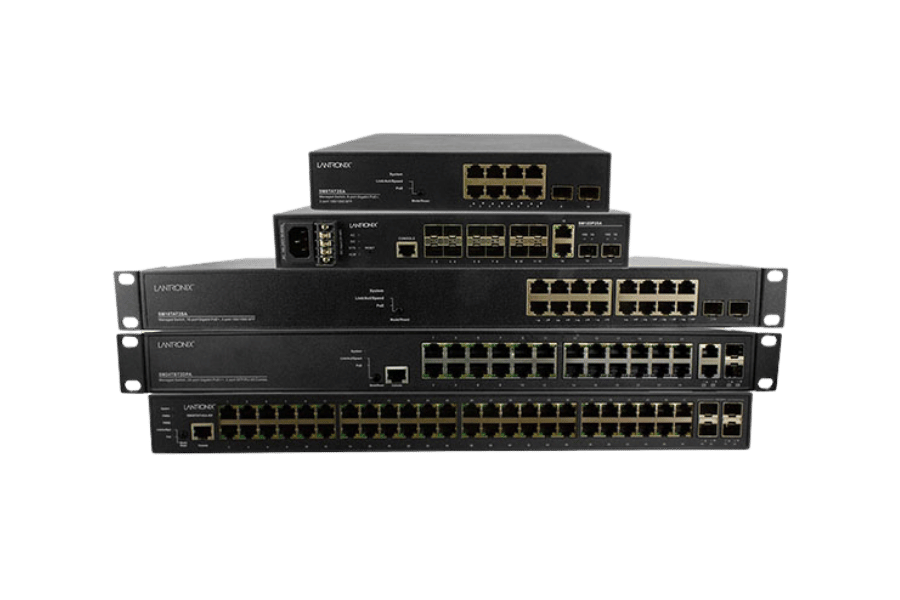
Types of Ethernet Switches
- Ethernet switches are divided into three main types: unmanaged, managed, and smart switches, according to their use and features.
- Unmanaged Switches are very basic and do not require any configuration. they are plug-and-play devices which makes them easy to use at homes or small networks where cost matters.
- Managed Switches offer more advanced features like VLAN, monitoring, and network security. These switches are ideal for enterprise environments where flexibility, control, and scalability are needed.
- Smart Switches, also called partially managed switches, are in between unmanaged and managed switches. They have some configurable features which make them suitable for small to medium-sized businesses.
The right choice of switch to use is determined by the size of the network, performance requirements and needs for management.
The Role of Network Switches in Connectivity
Network switches are crucial for maintaining effective connectivity in a network. They facilitate the moving of data from one device to another like a computer, printer or server via a particular method that directs the data to its destination. By minimizing congestion, Switches ensure constant network communication, building Optimized network performance. Within a local area network (LAN), switches attach multicasting devices which promote resource sharing, enhance data transfer velocity, and preserve network efficacy—facilities that are crucial in orderly and scalable complex networks.
How Ports and PoE Enhance Switch Capabilities
Network switches come with a number of ports, each form physically bounds of a network, which serves as a point of attachment for other devices. These ports change in type from fast ethernet, gigabit ethernet to even 10-gigabit ethernet meaning the network can incorporate different connection speeds based on its requirements. Uplink ports are now incorporated into modern switches. These are ports that are used for linking other switches or advanced network equipments to enlarge the network.
Power over Ethernet (PoE) support marks a further switch advancement as it allows data and power to be sent over a single Ethernet cable. This makes cabling easier and cheaper to install while still providing for IP cameras, wireless access points, and VoIP phones that need network access and power. Different PoE standards define the maximum wattage supplied per port: 15.4W with IEEE 802.3af (PoE), and 30W with IEEE 802.3at (PoE+). More powerful standards like IEEE 802.3bt allow power delivery up to 60W, and even as much as 90W per port, for demanding high power requirement devices.
The need for varying port types and configurations contributes significantly next to PoE in optimizing network infrastructure. These switches with the capabilities of handling any type of device with different power requirements enhance operational efficiency, network expansion, and offer reliability against emerging technological demands.
What Are The Simplifications HPE Aruba Networking Brings To Network Management?
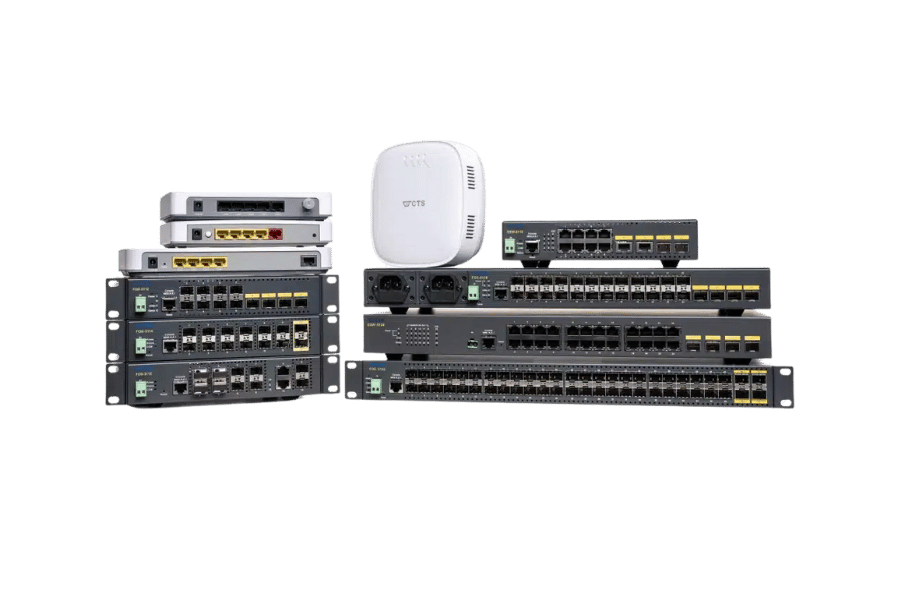
What Advantages Do HPE Aruba Networking Scalable Solutions Offer?
HPE Aruba Networking provides many advantages for scalable solutions. First, their devices are built for high-performance and can effectively handle ever-growing network demands. Second, Aruba’s advanced management tools streamline configuration, monitoring, and troubleshooting, which ensures efficient and effective operations on the network. In addition, these solutions allow for integration with existing infrastructures with little disruption, ensuring an optimal ROI. Lastly, Aruba has strong security measures, safeguarding the network’s security as it expands and is scaled to adapt to changing business requirements.
Wireless and Wired Networks Integration
The integration of Wi-Fi and wired networks is crucial for modern enterprise environments. This merging enables unified management and peak performance while improving scalability. Advanced networking technologies like Software Defined Networking (SDN) and high-performance switching solutions enable businesses to attain still higher levels of dynamic interconnections, both wireless and wired.
The unification of network management systems is one of the most effective approaches towards integration. It allows an IT administrator to oversee the single network composed of multiple sub-networks, improving visibility and decreasing operational burden. To illustrate, networks with centralized controllers or cloud-managed networks can automatically ensure device-level configuration consistency and continuity across devices.
Moreover, the increasing bandwidth requirements resulting from Wi-Fi 6 and Wi-Fi 6E can be efficiently handled by high-speed Ethernet backbones such as 10GbE. There has been evidence that suggests the existence of networks compliant with these wireless standards that can support data transfer speeds of up to 9.6 Gbps, providing a level of efficiency comparable to wired connections.
To solve the problem of security during integration, modern approaches utilize end-to-end encryption, network segmentation, and zero-trust policies on wireless and wired domains. Implementing these strategies protects breaches while complying with industry standards like IEEE 802.1X and WPA3.
The integration of wired and wireless networks helps an organization to optimize their IT infrastructures, manage hybrid work models and prepare for future changes in technological systems.
Improving Protection and Network Productivity
It is very important to conduct security audits regularly as they contribute both to security measures and overall network productivity. Security audits assist in determining vulnerabilities, compliance auditing, and checking whether security measures like firewalls and encryption are correctly configured. For businesses, performing regular assessments aimed at gauging system performance, as well as identifying potential threats, results in proactively addressing problems, reducing downtimes, and enhancing network productivity. The network is optimized for enhancing resiliency against new cyber threats, while ensuring maximum productivity.
How do you ensure scalability and performance in data center environments?
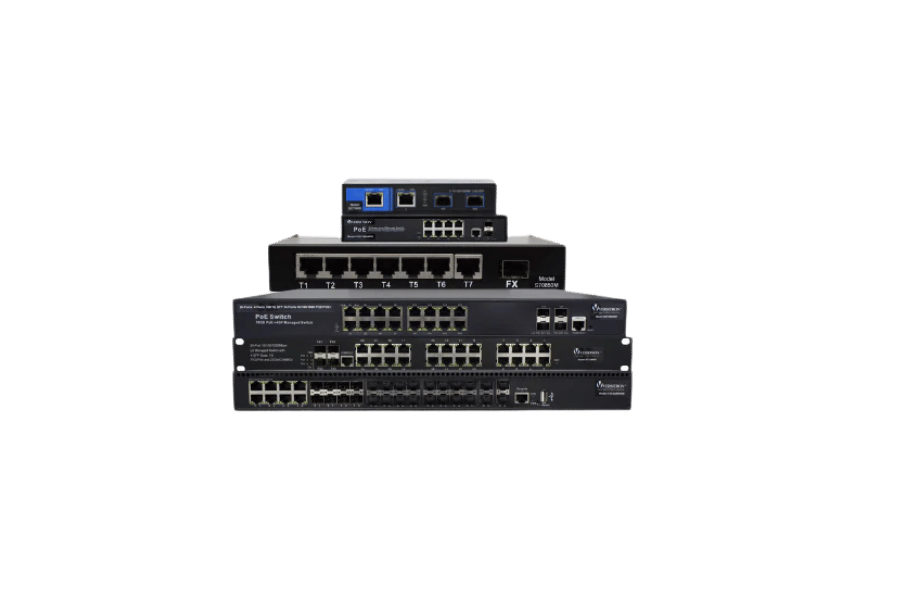
Maintaining Scalability and Performance Through Data Center Switches
Modern IT environments require high-performance data center switches to maintain scalability and optimal performance. Such data center switches should, at a minimum, guarantee high throughput, low latency, effective traffic management, and port configuration expansion. Also ensure the availability of supporting Software-Defined Networking (SDN) and network automation tools. The switches also have to be energy efficient while reliably scaling with the increasing data demand. Regular updates and maintenance also need to be performed to ensure the hardware and firmware are in sync with the network’s evolving needs. Maintaining these practices is critical to ensuring a high-performing infrastructure in the data center.
Low Latency Throughput Solutions
In Low Latency and High Throughput Solutions, the previously mentioned practices will need to be adjusted to ensure low latency and high throughput. These practices include placing the highest performing network switches and routers at the forefront, ensuring they are engineered for minimal processing delays. Sophisticated optimization servers connected through fiber-optic cables should be used to not only reduce data transmission delays, but the physical distance to other systems. QoS and VLANs should also be utilized to reduce congestion through traffic segmentation. Network analytics should also be conducted regularly to ensure uninterrupted data transmission at optimized speeds and efficiency.
Selecting Between Access Edge and Core Switches
It is critical to remember their functions within the topology when selecting between core and access edge switches. Core switches are responsible for enabling high speed data transfers and serve as the backbone of the network by interconnecting numerous tiers and facilitating critical processes. They are best suited for large scale environments that require high reliability and capacity.
Access edge switches are responsible for connecting the end devices (PC, Printers, etc.) to the network. Their focus is on user level connectivity and usually contain PoE ports for IP phones and access points. These switches are best suited for local traffic management and ensuring access to end users.
To optimize network-wide performance and provide scalability, core switches are advised, while localized access and user connectivity is best served with access edge switches.
What Are the Benefits of Modular and Stackable Switches?
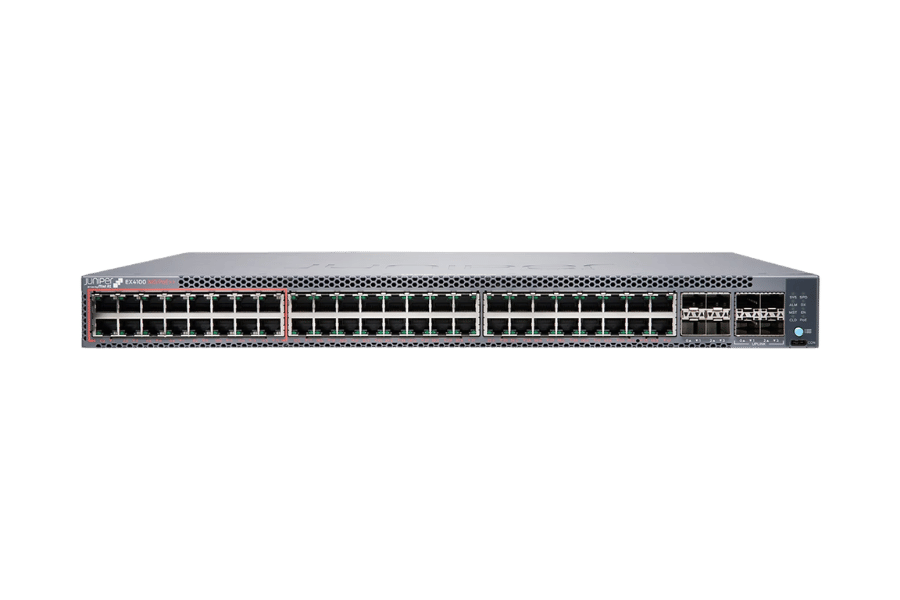
Understanding Layer 2 And Layer 3 Design of a Network
Designing a Layer 2 or Layer 3 network means that two of the OSI (Open Systems Interconnection) model networking functions are being considered, one at a time. Layer 2 deals with switching of data into a single network or its segment, by directly transferring the data through MAC address forwarding between devices on the network. This works perfectly for local traffic in less complex networks.
Routing between several network segments or subnets using different geographical IP addresses is made possible by Layer 3. Communication over larger networks and different locations is supported. A combination of layer 2 switching for efficiency of local traffic and layer 3 routing for added connectivity and traffic routing is largely favorable in exemplary network designs. This framework provides better scalability, advanced traffic management, and enhanced network performance.
Scalable Growth Strategy for Optimizing Network Layout
To have network growth that is scalable, consider these approaches:
- Organizational Segmentation of the Network: Deploy VLANs and subnetting techniques that help structure movement of information to eliminate congestion while ensuring optimal usage of resources.
- Adoption of Easily Scalable Technologies: Add new features like SDN that permit restriction-free and centralized control of the network as it grows.
- Plan for Redundancy: Design redundant pathways and components to mitigate outages and maximize reliability during peak usage periods or when hardware malfunctions occur.
- Monitor and Analyze Traffic: Utilize network monitoring systems to collect relevant information and take actionable steps to resolve bottlenecks or escalated needs.
These steps clearly delineate operational procedures for sustaining efficiency while enabling the network’s adaptive growth.
The Effects of Multi-Gigabit and High-Density Designs
The ability to transmit data at higher speeds and connect more devices with multi-gigabit and high-density designs increases the capacity and performance of a network. These multi-gigabit and high-density designs solve the ever-growing bandwidth concerns in enterprises, data centers, and schools. They provide dependable connectivity during traffic surges by optimizing bottleneck alleviation and data flow efficiency. Moreover, these designs ensure sustainable growth of the network, avoiding impediments when new innovations like IoT devices or sophisticated collaboration systems are added.
What Role Do Campus Switches Play in Modern Enterprise Networks?
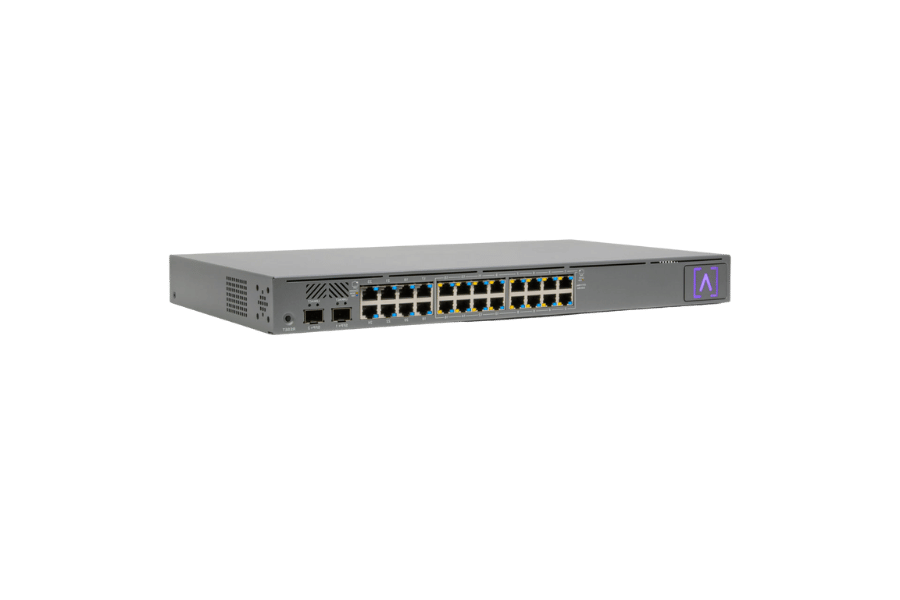
Analyzing The Access Layer of The Network and Aggregation Strategies
As aids to basic functionality—like computers, phones, or wireless access points—campus switches serve as a critical component in current enterprise networks because they sustain both acces layer and aggregation strategies. As noted above, they connect and enable base-level elementary devices communication which is referred in switch functionalities to as the access layer. Moreover, they aggregate the multitude of streams produced by numerous access switches and forward them through aggregation campus switches to the core network. Ensured network efficiency and reliability depend on fair allocation of bandwidth, redundancy, and advanced management features at these optimization data handling switches. All purported enabling constructs help to meet the high demand for slow changing enterprise environments infrastructure capable of adapdability and integration.
Deploying Industrial Ethernet Switches for Robust Solutions
As sang asoused above, Ethernet switches play a pivotal role in ensuring dependable functioning within harsh industrial settings. These types of switches are capable of withstanding extreme conditions like high temperature, humidity, or vibration without destabilizing the network. They provide enhanced durability features like ruggedized enclosures, extended industrial temperature range, and redundant power inputs to lower the likelihood of downtime. It is crucial to prioritize Industrial Ethernet Switches with advanced security features, capable of real-time data processing, and seamless system integration. These measures optimally safeguard business systems and ensure consistent operational efficiency even within demanding industrial applications.
Achieving Reliable Network Performance with the 2930M Series
Reliable network performance is achieved through scalability and efficiency enabled by advanced features on the 2930M Series. For maximum flexiblity in meeting the growing demands of the network, high-speed connectivity is supported through modular uplinks. Also, the series provides increasing levels of data integrity with dynamic segmentation and robust access controls, provided by advanced security measures. Troubleshooting and configuration of the network is simplified through user-friendly management tools such as Aruba NetEdit. With lowered energy consumption, high resiliency, and operational efficiency, the 2930M Series is a modern networking need.
Frequently Asked Questions (FAQ)
Q: What are enterprise network switches and why are they important?
A: Enterprise network switches serve as the foundation for any large-scale computer network, facilitating the speedy transfer of information between multiple devices. For core and data center operations, enterprise network switches are crucial because they maintain optimal data flow while guaranteeing precision, security, and expandability.
Q: Core and data center switching solutions differ from other switches in the network in what aspects?
A: Core and data center switching solutions are optimized for the high functional performance requirements of the data center network and core network hub. These switches outperform other switching devices in efficiency, switching capacity, and redundancy. Enhanced performance allows them to tackle the complexities of high traffic volume in large settings.
Q: What does SFP stand for in regard to its relevance to enterprise switches and what is its importance?
A: Small Form-factor Pluggable (SFP) is a criterion of designated transceivers which are meant for connecting switches to the networks infrastructure. It offers configuration versatility since users are able to trade out various plugs and links without altering the entire switch. This bolsters investment protection because clients are able to adjust their configurations easily.
Q: Why does Cisco come to mind so often when discussing enterprise network switches?
A: Cisco is known as a major Networking Solutions provider as it markets reasonably priced and dependable enterprise switches. Cisco switches provide endurance, high performance, scalability, and network access solutions which are trusted across multi-vendor network ecosystems.
Q: In what areas should I focus while looking for a switch that is intended for data centers?
A: Data center switches must have certain features like having high levels of performance metrics for switching, full Layer 2 and Layer 3 support, top of row (ToR) architectures, and zero touch configuration capabilities. In addition, they must also provide enhanced performance and access control; the requirements of modern data centers.
Q: What distinguishes managed network switches from unmanaged switches?
A: With more control and flexibility, managed network switches are easier to configure and monitor the entire system compared to their unmanaged counterparts. Unlike unmanaged switches which contain no configuration options, managed switches are well-suited for complicated systems with numerous VLANs, traffic shaping, and automated network processes.
Reference Sources
1. SDN/NFV Enabled Security for an Enterprise Network using Commodity Hardware
- Authors: Rizwan Saeed, Safwan Qureshi, M. U. Farooq, Muhammad Zeeshan
- Published In: 2022 International Conference on Computing, Electronics & Communications Engineering (iCCECE)
- Publication Date: August 17, 2022
- Summary: This paper illustrates how an enterprise security problem has been solved using Software Defined Networking (SDN) and Network Function Virtualization (NFV). The approach taken in this work integrates Zodiac FX OpenFlow switches with the SDN Controller on ONOS, deploying VNFs such as firewalls, IPS, and IDS. The research addresses the problems concerning the implementation of SDN/NFV-based security solutions and describes an implementation of the solution which improves the security of the network while maintaining inexpensive hardware(Saeed et al., 2022, pp. 25–30).
2. A cloud-based router management system for enterprise network management
- Authors: C. Ganesh, A. Saran, Gajendrachary, G Dency flora, M. Saravanan
- Published In: 2022 International Conference on Computer, Power and Communications (ICCPC)
- Publication Date: December 14, 2022
- Summary: This paper considers a internet-based system for managing enterprise networks which incorporates management of routers and switches. The system seeks to automate network processes, lower operational costs, and improve cooperation among IT departments. This paper also stresses the importance of developing an integrated network device configuration management system for improving the security posture and configuration of network devices(Ganesh et al., 2022, pp. 153–157).
3. Evaluation of passive network testing techniques in enterprise information systems
- Authors: Oleg Rudzeyt, Uriy Dobrzhinskii, Vladislav Zhigulskiy
- Published In: Russian Journal of Resources, Conservation and Recycling
- Publication Date: December 1, 2022
- Summary: This paper considers contemporary approaches of passive vulnerability detection of an enterprise network considering the effectiveness of network devices like switches. The authors study the effectiveness of such techniques with regard to the identification of security breaches and offer suggestions for more effective network security(Rudzeyt et al., 2022).
4. 5GLoR: 5G LAN Orchestration for enterprise IoT applications
- Authors: Sandesh Dhawaskar Sathyanarayana, Murugan Sankaradas, S. Chakradhar
- Published In: 2022 IEEE Future Networks World Forum (FNWF)
- Publication Date: October 1, 2022
- Summary: In this work, we develop a middleware for facilitating 5G data streams within an enterprise LAN. It analyzes the complexity of maintaining Quality of Service (QoS) in hybrid networks and presents an orchestrator, 5GLoR, that enhances data stream and application performance in an enterprise setting(Sathyanarayana et al., 2022, pp. 28–35).
5. CACS: A Context-Aware and Anonymous Communication Framework for an Enterprise Network Using SDN
- Authors: Bilal Rauf, Haider Abbas, A. Sheri, Waseem Iqbal, Yawar Abbas Bangash, M. Daneshmand, M. F. Amjad
- Published In: IEEE Internet of Things Journal
- Publication Date: July 15, 2022
- Summary: This document presents an enterprise network model that improves anonymity and context-aware SDN communication. It utilizes the global visibility feature inherent in SDN for agile communication regarding the privacy issue alongside the efficient protection of information(Rauf et al., 2022, pp. 11725–11736).
7. Ethernet
Related Products:
-
 S3100-48T2Q4X, 48-Port Ethernet Switch, 48x 10/100/1000/2500/10G BASE-T RJ45, with 2x 40G SFP+ and 4x 1G/10G SFP+ Uplinks
$1095.00
S3100-48T2Q4X, 48-Port Ethernet Switch, 48x 10/100/1000/2500/10G BASE-T RJ45, with 2x 40G SFP+ and 4x 1G/10G SFP+ Uplinks
$1095.00
-
 S3100-24T6X-P, 24-Port Ethernet Switch L3, PoE+ Switch, 24x 10/100/1000/2500 BASE-T RJ45, with 6x 1G/10G SFP+ Uplinks
$746.00
S3100-24T6X-P, 24-Port Ethernet Switch L3, PoE+ Switch, 24x 10/100/1000/2500 BASE-T RJ45, with 6x 1G/10G SFP+ Uplinks
$746.00
-
 S3100-48T6X-P, 48-Port Ethernet Switch L3, PoE+ Switch, 48x 10/100/1000BASE-T RJ45, with 6x 1G/10G SFP+ Uplinks
$734.00
S3100-48T6X-P, 48-Port Ethernet Switch L3, PoE+ Switch, 48x 10/100/1000BASE-T RJ45, with 6x 1G/10G SFP+ Uplinks
$734.00
-
 S3100-8T4X, 8-Port Ethernet Switch L3, 8x 10/100/1000/2500/10G BASE-T RJ45 Ports, with 4x 1G/10G SFP+ Uplinks
$398.00
S3100-8T4X, 8-Port Ethernet Switch L3, 8x 10/100/1000/2500/10G BASE-T RJ45 Ports, with 4x 1G/10G SFP+ Uplinks
$398.00
-
 S3100-48T6X, 48-Port Ethernet Switch L3, 48x 10/100/1000BASE-T RJ45, with 6x 1G/10G SFP+ Uplinks
$365.00
S3100-48T6X, 48-Port Ethernet Switch L3, 48x 10/100/1000BASE-T RJ45, with 6x 1G/10G SFP+ Uplinks
$365.00
-
 S2100-24T4TS-P, 24-Port Ethernet Switch L2+, PoE+ Switch, 24x 10/100/1000BASE-T RJ45, with 4x 1G RJ45/SFP Combo Uplinks
$360.00
S2100-24T4TS-P, 24-Port Ethernet Switch L2+, PoE+ Switch, 24x 10/100/1000BASE-T RJ45, with 4x 1G RJ45/SFP Combo Uplinks
$360.00
-
 S3100-16T8TS4X, 16-Port Ethernet Switch L3, 16x 10/100/1000BASE-T RJ45, with 8 x 1Gb RJ45/SFP Combo and 4 x 1Gb SFP Uplinks
$340.00
S3100-16T8TS4X, 16-Port Ethernet Switch L3, 16x 10/100/1000BASE-T RJ45, with 8 x 1Gb RJ45/SFP Combo and 4 x 1Gb SFP Uplinks
$340.00
-
 S2100-16T2S-P, 16-Port Ethernet Switch L2+, PoE+ Switch, 16x 10/100/1000BASE-T RJ45, with 2x 1G SFP Uplinks
$230.00
S2100-16T2S-P, 16-Port Ethernet Switch L2+, PoE+ Switch, 16x 10/100/1000BASE-T RJ45, with 2x 1G SFP Uplinks
$230.00
-
 S2100-24T4TS, 24-Port Ethernet Switch L2+, 24x 10/100/1000BASE-T RJ45, with 4x 1G RJ45/SFP Combo Uplinks
$148.00
S2100-24T4TS, 24-Port Ethernet Switch L2+, 24x 10/100/1000BASE-T RJ45, with 4x 1G RJ45/SFP Combo Uplinks
$148.00
-
 S2100-8T2S-P, 8-Port Ethernet Switch L2+, PoE+ Switch, 8x 10/100/1000BASE-T RJ45, with 2x 1G SFP Uplinks
$139.00
S2100-8T2S-P, 8-Port Ethernet Switch L2+, PoE+ Switch, 8x 10/100/1000BASE-T RJ45, with 2x 1G SFP Uplinks
$139.00
-
 S3100-4T2X-P, 4-Port Gigabit Ethernet Managed Switch, PoE+ Switch, 4x 10/100/1000/2500 BASE-T RJ45, with 2x 1G/10G SFP+ Uplinks
$90.00
S3100-4T2X-P, 4-Port Gigabit Ethernet Managed Switch, PoE+ Switch, 4x 10/100/1000/2500 BASE-T RJ45, with 2x 1G/10G SFP+ Uplinks
$90.00
-
 S2100-8T2S, 8-Port Ethernet Switch L2+, 8x 10/100/1000BASE-T RJ45, with 2x 1G SFP Uplinks
$71.00
S2100-8T2S, 8-Port Ethernet Switch L2+, 8x 10/100/1000BASE-T RJ45, with 2x 1G SFP Uplinks
$71.00

